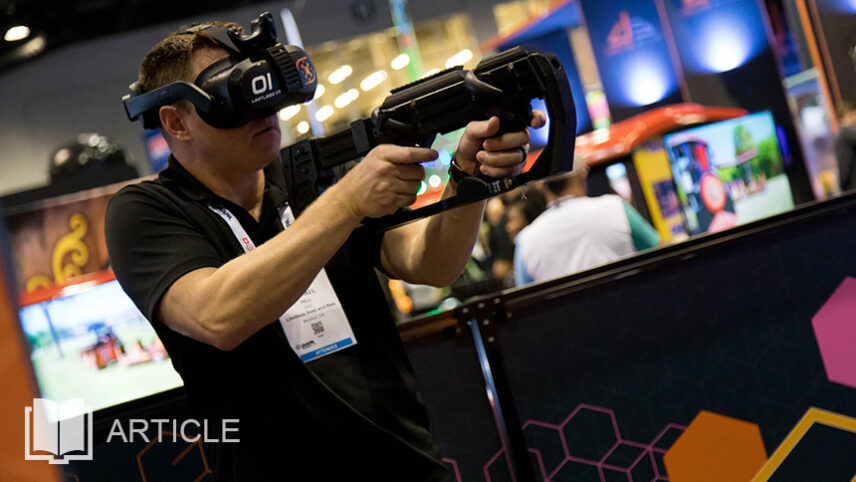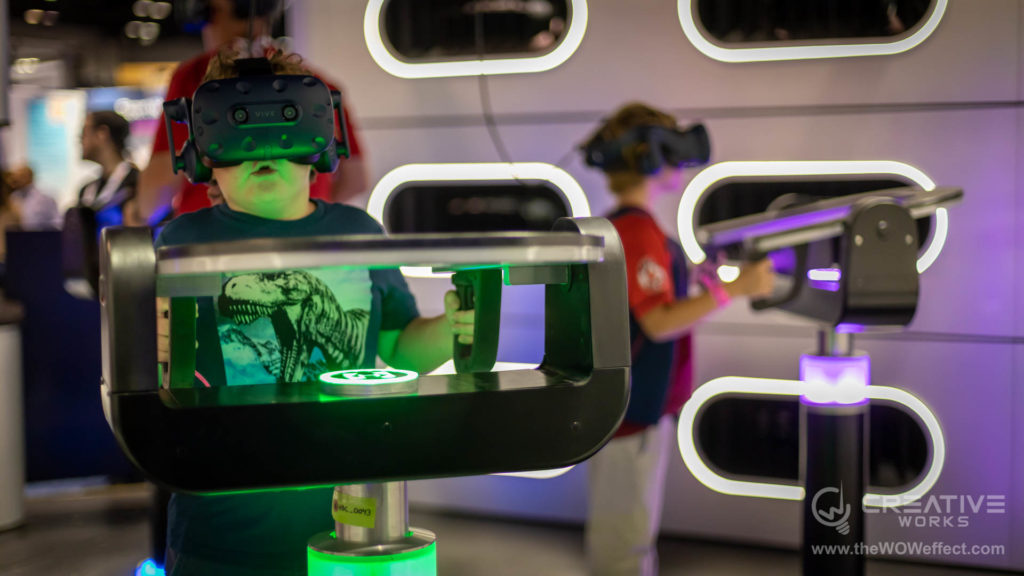BLOG
What’s the Best Way to Add Virtual Reality to your Center?

Virtual Reality (VR) is the hottest topic in the entertainment industry right now, and for good reason. Today’s technology is significantly better than the options 5-10 years ago; the graphics are more immersive and the VR platforms appeal to audiences of all ages. Right now there are multiple attractions for family entertainment center (FEC) operators to choose from, such as Hyperdeck, VAR BOX, or IP-based options like SpongeBob SquarePants VR: Dynamic Duo.
As proven by the popularity of VR at the most recent IAAPA Attractions Expo, this is an exciting time for this technology.
“With VR being the next emerging technology item, we wanted to make sure we were ahead of the curve on bringing it to our fun center“
Jim Saxe, owner of Putt-Putt FunHouse
But what’s the best option for existing entertainment centers? And how can FEC operators maximize the attraction’s success? This is what we’ll discuss in this article.
What is Virtual Reality?
First, let’s define VR and look at the current marketplace. An experience is considered virtual reality when the player uses a headset to enter a completely digital world; they don’t see any of their surroundings. They are immersed in the digital environment of the game. The VR options on the market exist broadly on two ends of a spectrum: free roam and arcade. Free roam is where players are completely un-tethered and they have the ability to freely walk around an “arena” during the game, like in Limitless VR, which recently won a Brass Ring Award at IAAPA for its innovative tech which allows the tracking of physical props with the arena. On the other hand, arcade is much smaller and players don’t have the ability to move around at all, but they can be great revenue drivers, as has been seen with SpongeBob VR.
Factors to Consider
Next, consider the most important factors of any attraction: customer experience, square footage requirements, throughput, and cost. You have to find the balance that makes sense for you. While there’s no “right” answer, here’s a good rule of thumb: you need to deliver an amazing experience that can actually fit in your center, and has a throughput and investment cost that delivers a solid ROI.
It’s also important to consider where this attraction will go in your center. We recommend placing it out in the open; in the front of your arcade or lobby where all the guests can see it. Some operators want to put a VR attraction behind walls in another room. But this hampers your ability to sell the game. When your attraction is out in the open, guests see players having a great time, and then those guests want to play too. If customers can see it, they’ll buy it.
This has been the case for Trent Coggins, owner of Recoil Trampoline Park, who put Hyperdeck VR right front and center in his venue, to great effect. As soon as kids (and their parents) see the excitement of other guests enraptured in fully immersive, motion-platform VR, they have to try it for themselves.

“There’s a lot of virtual reality out there right now but I figured you needed something a little bit more to get a kid off the sofa. 3D was one thing, but 5D is quite a different thing, and Hyperdeck, to me, was above and beyond. We put ours literally right at the front of our facility. It almost sells itself.”
Trent Coggins, owner of Recoil Trampoline Park
Additional Tips
In addition, Eddie Hamann, a managing member at Andretti Entertainment also recommends “priming the pump.” His facility usually starts getting really busy around 5:00pm. At this time, he sends 4 of his employees over to play VR together. During the quick game, guests surround the attraction to catch all the excitement. When the game ends, all the guests watching want to play so they get in line. At that point, Hamann has a queue of people for the rest of the night. This simple trick helped him generate significantly more revenue.
Lastly, don’t forget about exclusivity of content. Entertainment operators will always have to fight in-home entertainment. You can’t expect to succeed if you offer games that consumers can get at home. Instead, make sure the VR platform you choose has exclusive content that’s only available on that platform, like with VAR BOX, which has its own dedicated developers adding to an ever-expanding library of games.
Conclusion
This is the perfect time to add a virtual reality experience to your facility. But you can’t just pick a VR platform at random and expect to succeed. You need to know your own business and consider the factors in this article to find the best fit for you.



